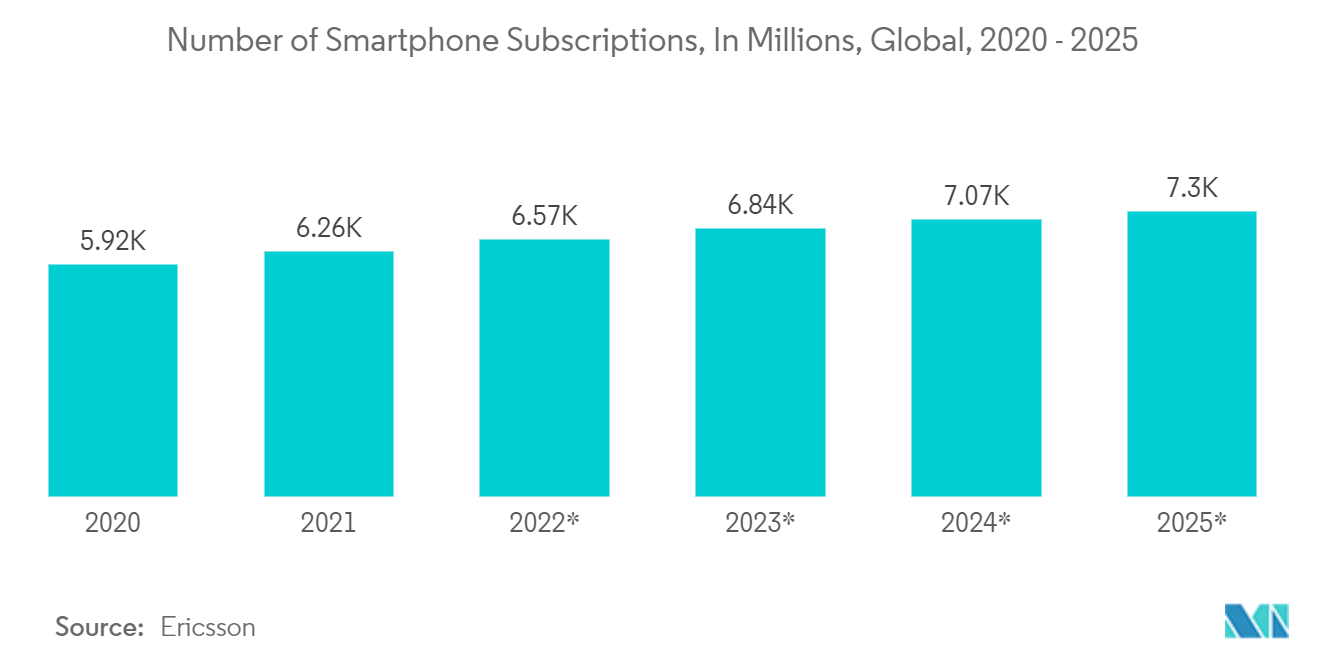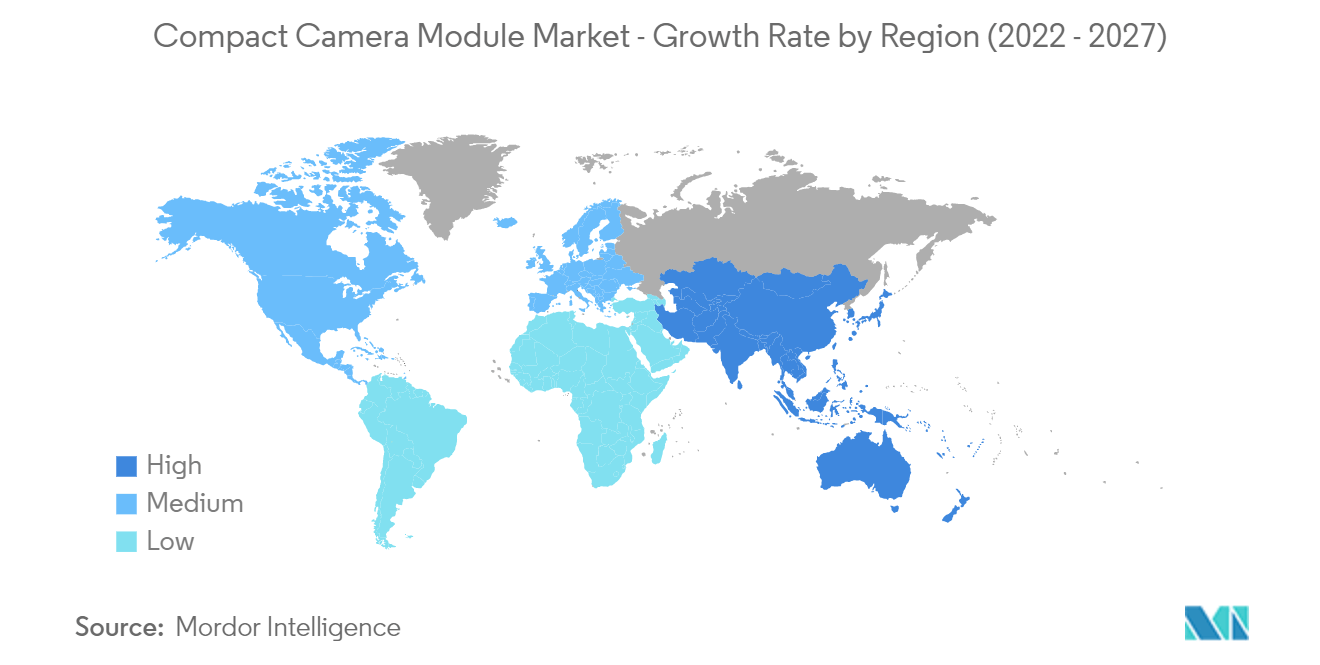Market Trends of Compact Camera Module Industry
This section covers the major market trends shaping the Compact Camera Module Market according to our research experts:
Mobile Sector to Hold the Largest Market Share
- The mobile segment holds the largest market share of the compact camera module market, owing to the growing consumer specifications and the stiff competitive nature of the market. Cameras have become a critical feature for mobile device manufacturers as the consumer's purchasing decision is also greatly dependent on the type of camera and pixel size.
- The CCM market is aided by the adoption of high-resolution cameras in mobiles and increased by the adoption of multiple front and back cameras. The increasing resolution requirement for rear and front-facing mobile cameras drives the market.
- Even though the smartphone market has reached the maturity level, the continuous advancement in the sensors technology and the trend toward the depth effect of mobile cameras has raised the application of multiple compact camera modules for each smartphone unit, increasing the demand for CCM in the segment.
- The increasing demand to improve cameras' resolution across smartphones of all ranges has enabled several manufacturers to launch new products. For instance, in June 2022, Samsung announced the smallest 200 Mega Pixel smartphone sensor. Samsung's ISOCELL HP3 image sensor features 0.56-micrometer (μm)-pixels which are 12 percent smaller in pixel size than the predecessor's 0.64μm.
- Moreover, in February 2022, OPPO announced a three-year strategic partnership with Hasselblad to help introduce new camera technologies to OPPO's flagship Find series of mobiles. Such instances drive the demand for compact camera modules over the forecast period.
- According to Ericsson, the number of smartphone subscriptions globally surpassed six billion in 2021 and is forecast to grow further by several hundred million in the next few years.

Asia-Pacific Region to Witness the Fastest Growth
- China and India are the nations with the highest number of smartphones. Also, the development in the laptops and notebooks towards faster and thinner is advancing camera module companies for further improved quality innovations. The rapid increase in smartphone penetration and the growing disposable income is driving the population the quick switch to the latest technologies in consumer electronics.
- Moreover, the introduction of smart cities is acting as a significant driving force for video surveillance in China. Advanced video surveillance techniques have been integrated with the city administration to boost efficiency.
- In October 2021, the Union Government selected Honeywell Automation India to lead the INR 496.57-crore Bengaluru Safe City project under the Nirbhaya Fund. The project was launched by the Ministry of Home Affairs to encourage women and girls to pursue all opportunities in public spaces while being free from harassment or violence based on gender. Such developments are boosting the implementation of compact camera modules in the region.
- In July 2022, the camera module supplier for Apple iPhone, LG Innotek, announced an investment of USD 1.07 billion to expand the production of camera modules and other electronic parts. The South Korean electronics parts maker signed a memorandum of understanding with the city of Gumi, North Gyeongsang Province, to add production lines to its Gumi manufacturing campus by the end of 2023.
- Moreover, in May 2021, Chicony Electronics Co. Ltd, a manufacturer of Keyboard and compact camera modules (CCM), started production at its new plant in Thailand, with the capacity to increase from 60% of the designed level currently to 100% by year-end 2021.
- Further, the automotive sector is expected to be one of the region's largest consumers of camera modules. Japan is one of the largest automotive markets in the world. With changing dynamics in the industry, automotive manufacturers are moving toward autonomous vehicles to meet the needs of consumers.


